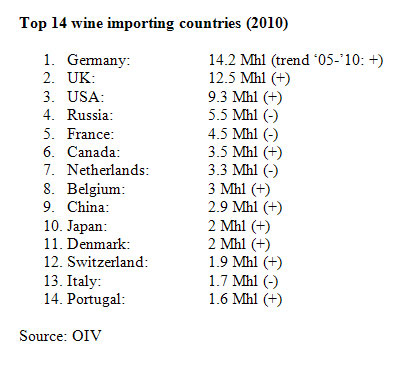Mexico, Brazil, Poland and Nigeria open new wine frontier, says Rabobank
That’s some optimistic extrapolation: if they drink lots of beer, they will eventually drink wine too. No doubt, Mexico, Brazil, Poland and Nigeria sport comparatively high beer consumption rates. But to what extent consumers in these markets can be swayed towards wine remains to be seen.
With maturing or declining sales in many traditional markets, wine companies across the globe are increasingly searching for new growth markets. Emerging markets are attracting the interest of nearly all major wine companies. While China and South Korea probably rank as the most attractive emerging wine markets, Dutch Rabobank, in a recent report, has identified Mexico, Brazil, Poland and Nigeria as four hidden gems that have the potential to become important growth markets.
As always, it’s a case of first come first served, says Rabobank. Early investments to establish a route to market and build brand awareness hold the key to long term growth in these markets.
The Mexican market may be easy to overlook, reports Rabobank, but it is proving lucrative for many suppliers. As well as enjoying a strong economy, the growth in the middle class population is leading to improved wine consumption trends and wine imports grew at a 20 percent compound annual growth rate (CAGR), between 2006 and 2011.
Similarly, imported wine volumes in Brazil grew by nearly 30 percent in the four years from 2007 and 2011 due to growing interest in wine and limitations of domestic producers to match the quality of imports.
Poland too, has seen strong growth in demand for imported wine. Most wines sold in Poland today are imported from the Americas. According to Ambra SA, a Polish wine company, the value of the market exceeds EUR 500 million.
In contrast, Nigeria is far less transparent than Poland and requires a much higher tolerance for risk. With a population of approximately 170 million and large oil reserves, Nigeria has a strong foundation for continued economic growth and increased demand for wine, especially red varieties.
South Africa’s wineries have already eyed up the Nigeria as an export market. According to their estimates, the value of Nigeria’s wine market was about USD 300 million (2011) and is expected to reach USD 370 million by 2015. But the South African vintners, like their competitors elsewhere, are only too aware that doing business in Nigeria is not a walk in the park.
Issues to be considered when entering the Nigerian market are the 50 percent import duties, the onerous and expensive bureaucracy that includes registration of all wine with the National Agency for Food and Drug Administration and Control, and political unrest and corruption.
These four markets represent a mixed bag of opportunities with varying risks and imponderabilities, but the wine industry has never been a place for timid operators.


